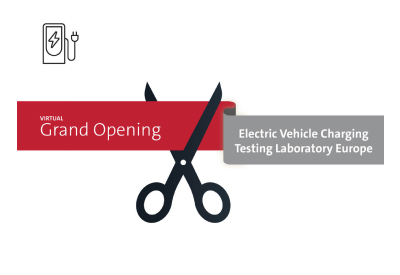ABB Reinvents the Circuit Breaker for Renewables and Next-Gen Power Grids

May 3, 2019
A technological breakthrough by ABB – a solid-state circuit breaker – will enhance performance of renewable energy solutions, industrial battery storage solutions and so-called edge grids.
- Vital for the electrification of sustainable transport
- Power losses are 70 percent lower than comparable solutions, enabling savings of up to $200,000 in a ferry and up to $1 million in a cruise liner over a ten-year period
- Circuit breakers to become 100 times faster than electro-mechanical systems, service no longer needed as no mechanical components
- Prevents losses of up to $100,000 per plant from missed energy delivery and system recovery associated with a short circuit fault
ABB has developed a revolutionary solid-state circuit breaker concept, which meets the highest demands of next-generation power applications as they enter the digital age. The ground-breaking low voltage circuit breaker concept was revealed to the public for the first time at the Hannover Messe in Germany. The product will be available in 2020.
With the new device, today’s electrical grids will be better able to keep up with the rapid growth of renewable energy solutions and the shift towards the electrification of transport – whether that’s electric cars, buses, trucks or maritime vessels – because they will be able to meet new demanding requirements better and more quickly.
The ABB solid-state breaker concept works by replacing the traditional moving parts of an electro-mechanical circuit breaker with power electronics and advanced software algorithms that control the power and can interrupt extreme currents faster than ever before.
Developed in Italy at ABB’s Bergamo Electrification business R&D Center, the ABB breaker concept is the first of its kind to use a patented integrated gate-commutated thyristor (IGCT) semiconductor technology. This technological breakthrough is combined with new embedded predictive power management software, protection algorithms and higher levels of connectivity.
For electricity grids, the introduction of the new ABB concept circuit breaker is as dramatic as the switch from vacuum tubes to transistors, which heralded the start of the digital age. “This development is going to strengthen the weakest link in next-generation electricity infrastructure. Our 21st Century circuit breaker technology can better meet the demands of renewables, the electrification of transport and modern edge grids as today`s offerings,” said Giampiero Frisio, the head of ABB’s Smart Power business line.
“With the ABB concept circuit breaker, we help to address the big challenges of future energy requirements, with ABB innovation and quality. This is a major step forward that will help customers address the main challenges of future energy requirements.”
The ABB circuit breaker will make electrical distribution systems more reliable and efficient and will drive down maintenance costs while meeting the durability demands of next-generation electrical grids. The solid-state circuit breaker will be around 100 times faster than traditional electro-mechanical breakers. Its speed maximizes the performance of power distribution systems, while maintaining service continuity. The new ABB breaker will also improve safety and protection for people and equipment. As there is no energy release when the current is interrupted, there is no risk of arc energy exposure.
Grid-edge electrical architectures depend on energy storage systems – whether they are at a household or industrial scale. To operate reliably, they require protection devices with extreme short circuit capabilities and outstanding electrical durability. For example, in the event of an electrical fault in a 4MW utility-scale battery system, the new solid-state circuit breaker can prevent losses of up to $100,000 per plant from missed energy remuneration and system recovery costs. Traditional mechanical circuit breakers also require regular servicing and have to be replaced after about 10,000 operations. ABB’s solid-state concept circuit breaker can achieve millions of operations with complete reliability and near-zero servicing.
Sustainability and e-mobility will reshape cities and every aspect of the transportation of goods and people. The marine segment, for example, is an emerging market for batteries using energy storage systems to reduce emissions and improve fuel efficiency for commercial vessels.
Frisio concludes: “The real innovation is how easily the ABB concept breaker will integrate into applications. We looked at the complex, full system solutions already out there on the market and decided to give customers a simple standalone component they can integrate into any solution. ABB’s technology also has the advantage that power losses are 70 percent lower than comparable solutions, enabling savings of up to $200,000 in a cargo or passenger ferry and up to $1 million in a cruise liner over a ten-year period.”
The ABB concept solid-state circuit breaker will also make it simpler to integrate power installations into the digital world. Connection to the ABB AbilityTM digital platform makes intelligent microgrid management strategies and a host of other data-driven digital solutions straightforward.
Examples of how the ABB concept circuit breaker will underpin the future of energy include:
- Electric Transportation: In marine vessels, for example, the solid-state circuit breaker will make it possible to keep systems up and running without much interruption, as it is possible to disconnect just a faulty zone while keeping the rest of the electrical distribution system running; complete system shutdowns will be a thing of the past.
- Battery storage solutions: In case of a fault, the solid-state circuit breaker disconnects the faulty zone only, which avoids all the rack fuses blowing up and the resultant shut down of the whole system. The result is maximized plant uptime and minimized revenue losses.

















